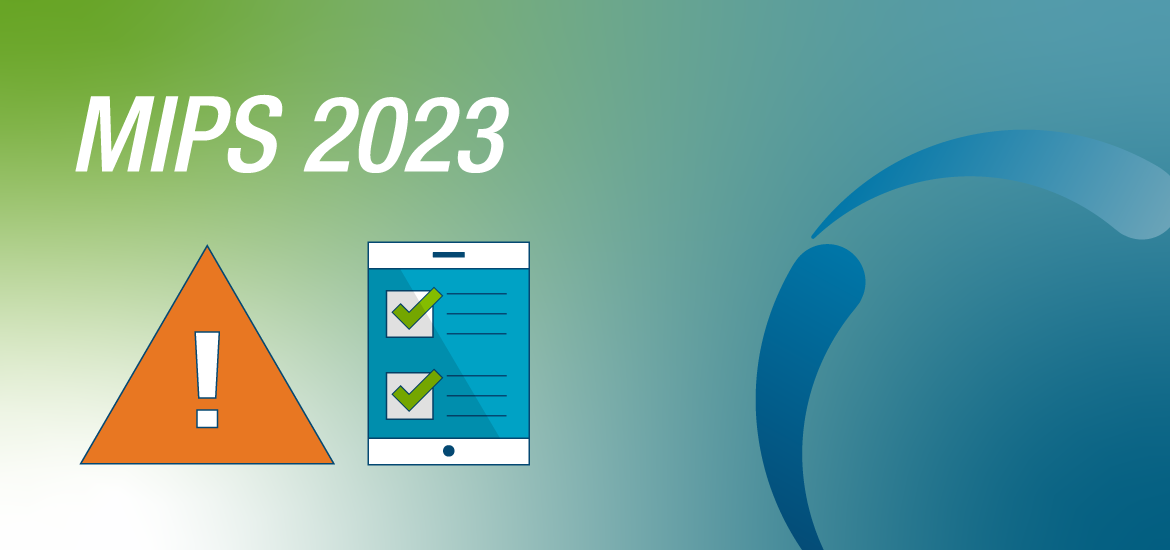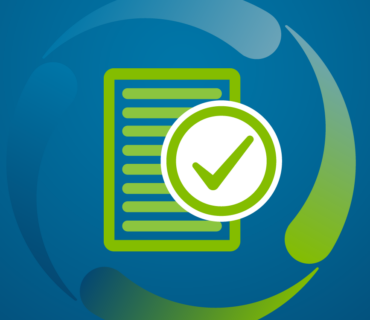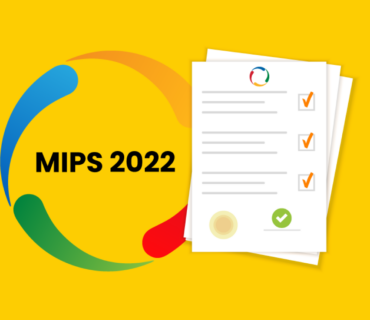
MIPS 2023

Penalties/Rewards
Adjustments in the MIPS program are steep. After the 2023 performance year, clinics won’t see any changes until 2025, when penalties/incentives take effect. These penalties/rewards will appear on the clinic’s future reimbursements from Medicare, depending upon their score.
For the 2024 performance year, the stakes for these penalties remain at maximum 9%, with the program expected to continue rising for a few more years. The rewards are subject to change as MIPS is a budget neutral program. The two-year delay will remain constant as well.
One thing to keep in mind though, is that the program is budget neutral, meaning all the payment incentives for the people at the top of the program will come from the penalties taken from the people at the bottom. There is no way to guarantee a clinic will receive a particular percentage or dollar amount, as we have no way of knowing how other participants in the program will perform.
Eligibility/Requirement
This is always the big question: how does a clinic know whether they have to participate in MIPS? The short answer here is that it is very, very difficult to know for sure. With that in mind, you will have to make some tough decisions based on the data we currently have available. There are a few different factors that we have to take into account here:
1. There are 3 determination thresholds. If a provider meets 1 or 2 of the thresholds, they are eligible to participate and can choose whether or not the risk/reward is worth it to them. If the provider meets all 3, they are required to participate.
2. Determinations are made on an individual provider basis, even if your clinic bills as a group.
The determinations are as follows:
• Greater than 200 units billed to Medicare
• Greater than 200 distinct Medicare patients
• Greater than $90,000 in allowable amounts billed to Medicare
You can check your participation status at: Participation Lookup (cms.gov)
Submission Decisions
Say you decide to participate in MIPS. There are two major decisions to be made before diving in:
Claims or Registry
a. Claims: Only small practices, of 15 or fewer providers, can submit via claims.
1. When a clinic is submitting via claims, they only need to report MIPS for Medicare patients and it is free for them to report.
2. MIPS information is sent out every time you bill an eval or a re-eval code, so if anyone makes a mistake, it cannot be fixed.
3. NOTE: If filing claims, a clinic is required to report as individuals.
b. Registry: Clinics of 15 or more providers are required to submit via the registry.
1. Registries have an additional cost to submit (which varies based on the registry and whether you submit individually or as a group.) Clinics submitting via registries are also required to report MIPS data for all patients of all insurances, with the exception of minors.
2. There is, however, an advantage to registries in that the registry keeps an eye on performance and will send quarterly reports to inform the clinic of how they are doing and to help guide your performance in the program. TheraOffice has a registry for 2024, if you would like information, we would recommend visiting www.theraoffice.com/registry/
Individual or Group
a. Individual: Claims can only file as individuals, but registries can as well. When you are submitting as individuals, each NPI is taken into consideration and their progress is measured separately.
1. You can pick and choose which providers are participating in the program.
2. The MIPS measures will show up in everyone’s documentation, that said, only the providers you indicate will be REQUIRED to fill out MIPS to be able to lock their note.
b. Group: When you submit as a group, your group NPI is used and everyone’s progress is measured together.
1. This is useful when everyone will be submitting anyway, as it can be more affordable when using a registry, and also simpler to keep track of.
2. All providers must participate in the program. Even new providers that you add in 2024. This also allows them to receive the payment adjustment for 2024. If reporting individually, new providers would not end up getting scored.
Traditional MIPS vs MVPs
a. Traditional MIPS: Available to both claims and TheraOffice Registry clients. Is the original MIPS reporting option available to providers. This reporting option collects data across all four measurement categories.
b. MVPs (MIPS Value Pathways): The newest MIPS reporting option available. Each MVP includes a set of measures and activities that are related to a given specialty or medical condition. Reporting the Rehabilitative Support for Musculoskeletal Care MVP will be available to TheraOffice Registry clients.
Reporting MIPS
MIPS reporting is based on the CPT codes charged, rather than the types of notes. Most commonly, these codes are the evaluation and re-evaluation codes, which will require you to fill out all available MIPS measures. However, there are some additional codes that will require you to fill out just a specific measure. If one of these codes is charged, the system will prompt you to fill out the relevant sections.
MIPS Measures
There are a few measures available to report on in TheraOffice:
Additional information on MIPS quality measures is available here. Please note that measure specifications are subject to change from QPP rule making.
BMI (TheraOffice Registry clients (MVP)): Must be measured in the office, you cannot just ask a patient for their height and weight. If their BMI is outside normal range, you must document a follow up plan to help them get into normal range. BMI only needs to be reported once a year and patients can be exempt and marked as ineligible if they are under 18, pregnant, or non-ambulatory.
Falls (TheraOffice Registry clients (MVP and Traditional MIPS) or claims): If a patient is 65 years or older and has had 2 or more falls, they are considered a falls risk. If they are a falls risk, a provider must document a plan of care. In order for these measures to count toward the score, each participating provider will need a minimum of 20 patients who are a falls risk.
Diabetes (TheraOffice Registry clients (Traditional MIPS)): This measure is only available for TheraOffice registry customers. To be considered eligible, a patient must have a diagnosis code from their physician indicating that they have diabetes.
Medications (TheraOffice Registry clients (Traditional MIPS)): Proper documentation requires the medication name, dosage, frequency, and route of administration. Providers can also satisfy the requirements for this measure by scanning a list of medications to the patient’s file, as long as that list contains all 4 requirements.
Functional Outcome Assessment (TheraOffice Registry clients (Traditional MIPS)): Located under Functional Testing. Certain tests will assess a function and impairment. Some tests will assess both pain and functional outcome assessments.
Depression Screening (TheraOffice Registry clients (Traditional MIPS) or claims): Required for all patients above the age of 12 who are not already diagnosed with bipolar disorder. Many different types of screening available. Clinic will choose from QPP which they prefer to use, then will attest the result of that screening in TheraOffice. If the screening is positive for potential depression, the provider will document a follow-up plan.
Elder Maltreatment Screening (TheraOffice Registry clients (Traditional MIPS) or claims): All patients 62 years and older. Many different types of screening available. Clinic will choose from QPP which they prefer to use, then will attest the result of that screening in TheraOffice. If the screening is positive, they will report it to local or state adult protective services and, in TheraOffice, document that it has been reported.
Dementia (TheraOffice Registry clients (Traditional MIPS)): Education and Support: This measure is available only via the registry and are to be performed on all caregivers, regardless of patient’s age, when the patient already is diagnosed with dementia. In TheraOffice, providers will attest to providing education to caregivers of patient with dementia once per performance period.
Functional Status Change for Patients with Knee Impairments (TheraOffice Registry clients (MVP and Traditional MIPS): This measure is for patients 12 years of age or older and they must have a knee impairment. The measure is conducted at the time of an evaluation and discharge.
Functional Status Change for Patients with Hip Impairments (TheraOffice Registry clients (MVP and Traditional MIPS): This measure is for patients 12 years of age or older and they must have a hip impairment. The measure is conducted at the time of an evaluation and discharge.
Functional Status Change for Patients with Lower Leg, Foot or Ankle Impairments (TheraOffice Registry clients (MVP and Traditional MIPS): This measure is for patients 12 years of age or older and they must have a lower leg, foot or ankle impairment. The measure is conducted at the time of an evaluation and discharge.
Functional Status Change for Patients with Low Back Impairments (TheraOffice Registry clients (MVP and Traditional MIPS): This measure is for patients 12 years of age or older and they must have a lower back impairment. The measure is conducted at the time of an evaluation and discharge.
Functional Status Change for Patients with Shoulder Impairments (TheraOffice Registry clients (MVP and Traditional MIPS): This measure is for patients 12 years of age or older and they must have a shoulder impairment. The measure is conducted at the time of an evaluation and discharge.
Functional Status Change for Patients with Elbow, Wrist or Hand Impairments (TheraOffice Registry clients (MVP and Traditional MIPS): This measure is for patients 12 years of age or older and they must have an elbow, wrist, or hand impairment. The measure is conducted at the time of an evaluation and discharge.
Functional Status Change for Patients with Neck Impairments (TheraOffice Registry clients (MVP and Traditional MIPS): This measure is for patients 12 years of age or older and they must have a neck impairment. The measure is conducted at the time of an evaluation and discharge.
Screening for Social Drivers of Health (TheraOffice Registry clients (MVP and Traditional MIPS): Required for all patients above the age of 18. This measure is conducted at initial evaluation and re-evaluation. Different screenings may be available.
Improvement Activities
As part of MIPS participation, 2024 MIPS improvement activities need to be performed for 90 continuous days during the 2024 performance year. These activities are really important not only for the health of your clinic, but also because they make up 15% of your final score.
What are improvement activities?
- Various activities that can be performed by clinics with the hope of making improvements to their processes through ways such as ongoing care, patient and clinician shared decision making, safety practices, and expanding access.
How many improvement activities do I need to submit?
- The improvement activity requirements can change if your clinic is granted a special designation. You can check your designation here.
- Practices with a Special Designation are required to submit:
- 1 High-Weighted Activity OR
- 2 Medium-Weighted Activities
- All other practices are required to submit:
- 2 High-Weighted Activities OR
- 1 High-Weighted Activities & 2 Medium Weighted Activities OR
- 4 Medium-Weighted Activities
- Practices with a Special Designation are required to submit:
What improvement activities can I submit?
- QPP has 106 improvement activities, which can be viewed here.
- You should choose activities that best fit your clinic and are able to be completed for a 90-day period** this year.
- Here are some popular activities you may want to consider:
- Promote use of patient-reported outcome tools
- Activity ID: IA_AHE_3
- High activity weighting
- Collection and follow-up on patient experience and satisfaction data on beneficiary engagement
- Activity ID: IA_BE_6
- High activity weighting
- Hint: TheraOffice PE Surveys can help here!
- Implementation of fall screening and assessment programs*
- Activity ID: IA_PSPA_21
- Medium activity weighting
- Implementation of practices/processes for developing regular individual care plans
- Activity ID: IA_CC_9
- Medium activity weighting
- *If you do not utilize the Falls measures, we recommend reviewing the full list of Improvement activities here.
- Promote use of patient-reported outcome tools
**Please note that some activities may include specifications for a different period of time. Always double check the specifications for any activities you choose to perform and submit.
How do I submit?
- TheraOffice Registry Customers: You will be able to attest to performing the 2024 MIPs improvement activities through TheraOffice directly. (We’ll provider more specific information on this how to attest a bit later.)
- Claims Submission Customers: You are required to attest through QPP.
Helpful Links






